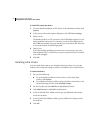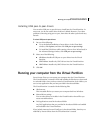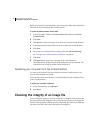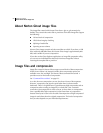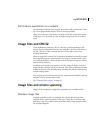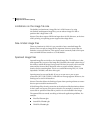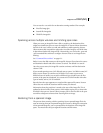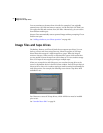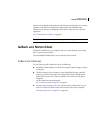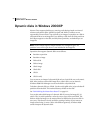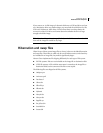
62 Image file options
About Norton Ghost image files
About Norton Ghost image files
The image files created with Norton Ghost have a .gho or .ghs extension by
default. They contain the entire disk or partitions of the disk. Image files support
the following:
■ Various levels of compression
■ CRC32 data integrity checking
■ Splitting of media files
■ Spanning across volumes
Norton Ghost images contain only the actual data on a disk. If you have a 9 GB
drive with only 600 MB of data, the Norton Ghost image is approximately 600
MB, and is smaller if you use compression.
If you also use the Ghost Explorer application, an image file companion utility,
you can recover individual files selectively from these image files without
restoring the complete disk or partition.
Image files and compression
Image files created in Norton Ghost support several levels of data compression.
When Norton Ghost is in interactive mode, three compression options are
available: none, fast, and high. The Norton Ghost command-line switch -z
provides access to nine levels of compression.
See “Command-line switches” on page 153.
As a rule, the more compression you use, the slower Norton Ghost operates.
However, compression can improve speed when there is a data transfer
bottleneck. There is a big difference in speed between high compression and no
compression when creating an image file on a local disk. Over a network
connection, fast compression is often as fast as, or faster than, no compression.
Over a parallel cable, high compression is often faster than no compression
because fewer bytes are sent over the cable. Decompression of high-compressed
images is much faster than the original compression. The level of compression
that you select depends on your individual requirements.





